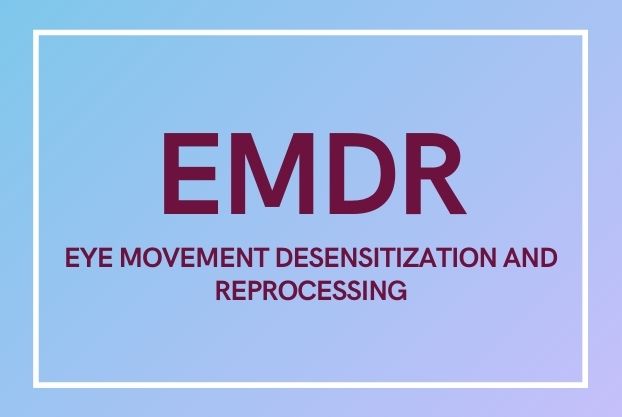Would you believe it if someone told you that simply moving your eyes from side to side could reduce anxiety and emotional distress? Sounds bizarre, doesn’t it? You're not alone — most people are skeptical when they first hear about EMDR (Eye Movement Desensitization and Reprocessing). Yet, it’s far from a gimmick.
In fact, studies have shown that up to 84–90% of single-trauma victims no longer meet the criteria for PTSD after just 3 EMDR sessions (Shapiro, 1989; van der Kolk, 2007). It may sound strange, but the results speak for themselves — EMDR has helped thousands reprocess trauma and reclaim their calm.
What exactly is EMDR?
Eye Movement Desensitization and Reprocessing (EMDR) is a psychotherapeutic approach that is very commonly used to resolve issues related to psychological trauma and other negative life experiences. In a nutshell, EMDR tries to focus on the past, present, and future by targeting past traumatic memories, uncovering the present distress that unprocessed trauma causes, and developing healthy beliefs and coping strategies for the future.
When something traumatic happens to us and we are not in control of the situation, our mind may not be equipped enough to handle the overwhelming amount of distress at that moment. This causes the brain and body to store trauma-related memories differently than non-traumatic memories. All the thoughts, feelings, and sensations associated with the traumatic event get stored in the body in such a way that coming across a trigger may cause us to relive the entire experience as though it was occurring in the present. The memories linked with the traumatic event are only partly processed as a protective mechanism to avoid our mind from being completely fractured. Therefore, EMDR helps an individual by giving them the space to fully process the memory that hasn’t been processed, and eliminate the negative beliefs, thoughts, and sensations that were associated with the trauma. One very important point to be noted here is that EMDR does not fade away the traumatic memory, but only helps to subside the pain associated with the memory.
Now, you may ask: how are eye movements relevant in EMDR? Eye movements are a form of bilateral stimulation, i.e., any sort of rhythmic activity that involves both the right and left sides of the brain, that serves to put the client in a more relaxed state of mind. You could compare bilateral stimulation to a mindfulness activity that ensures your conscious mind is distracted and less guarded. This is important in order to make the client more suggestible to dealing with the memories and thoughts that are stuck in the subconscious mind.
In other words, bilateral stimulation allows you to process your pain in manageable chunks until the entire traumatic memory is reprocessed. For instance, while a therapist instructs you to follow their fingers from side to side using your eyes, you are simultaneously revisiting the visual image, negative belief, and body sensations associated with the traumatic event. In a sense, your brain is ‘daydreaming’ since part of you is in the past, processing the memory like an image on a movie screen, and part of you is in the present, well-grounded and aware of the fact that you are not reliving the event. The more we expose ourselves to an event, the less powerful and emotionally intensive it becomes. EMDR therefore allows clients to come to terms with the painful life event and change their narrative in order to incorporate positive and adaptive beliefs in the future.

